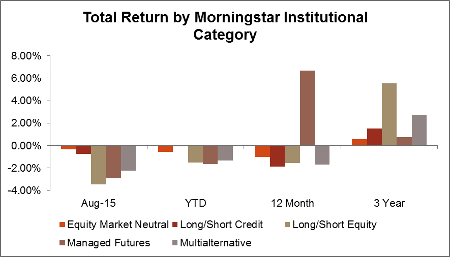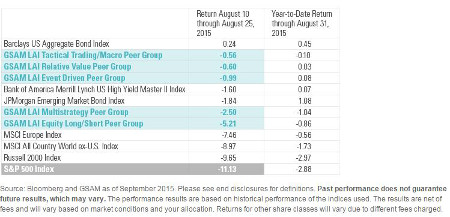No matter how much I fight it, stock market “crashes” tend to have a strong emotional impact on me. As a professional investor, I should be well prepared to be rational in times of stress, yet every time I see the Dow plunge 1,000 points in a matter of minutes, or see that equity futures are “limit down”, I run through the full gamut of emotions. In fact, upon contemplating my typical response, it appears that I go through the five traditional stages of grief.
Denial.
First, I check all of my data connections. Maybe this Bloomberg has stale numbers. Maybe I just need to reboot my PC, the trading desk PCs, my iPad, my Kindle or my Garmin Fenix 3 watch. Surely that makes more sense than seeing 5-10% intraday swings in the market!
Anger.
Soon after I’ve verified that this is indeed occurring, I become more than a little irritated. Why is this happening to me? Doesn’t Plutus (the Greek god of wealth) know that I am LONG today? Who’s doing this? Is violence a reasonable response if in fact I identify the perpetrator?
Bargaining.
Once I calm down a bit, I usually start looking for a way out. Usually it comes in some form of prayer, “I promise I will give up beer for six days if you can give me a 600 point bounce in my Nasdaq 100 position, and I’ll give up whiskey too if I can get 1,100 points in the DAX.”
Depression.
Once my bargaining inevitably fails, I put in my headphones and start listening to my “woe is me” playlist, ignoring everything else. I try to distract myself with some coding, but then I begin to wonder whether this career is worth it. Maybe I should be saving polar bears in the Arctic, taking up professional mountain running or just go home and go back to bed…even though it’s only 9 a.m.
Acceptance.
Eventually, these feelings of despair abate. I look back at my Bloomberg screens and their insane gyrations and I accept for now, that this may be my reality. I then remember that we have developed systems that work well in such times. Even though I’m currently staring at a large red P&L, I pour over the data and see that time and time again, with short-term pain comes the opportunity for long-term gain.
The lesson? Well, I am emotional. Humans are emotional. Heck, even some of the algos being deployed on Wall Street seem to be emotional (a reflection of their creators no doubt). However, having a disciplined, well-tested investment process can both protect against making an unwise decision (e.g., selling at the bottom) and simultaneously position an investor to take advantage of the opportunities that market turmoil tends to create. A crucial factor in maintaining discipline in such circumstances is understanding the true risks embedded in your portfolio. Risk is a tricky thing to nail down, as we’ll explore below in our educational section. However, suffice it to say, risk is in the timeframe of the beholder.
August, in a bit of an understatement, presented a challenging environment for investors. Equity markets experienced double digit losses at their lows, with the majority of global markets down between 6% and 12% for the month. Not only were day-to-day losses much larger than we’ve seen in recent history, but intraday price swings were reminiscent of 2008. With that as a backdrop, it’s not surprising that long/short equity funds were down for the month, as they carry equity beta. However, they did protect capital, losing 3.4% as a group vs. 6-12% for global equity markets. Managed futures funds also struggled, losing nearly 3% for the month, as the sudden shift in equity markets, coupled with a swift reversal in oil near the end of the month, left trend-following models lagging—which is to be expected when violent reversals happen across markets.

Turning to flows, multialternative and managed futures funds each brought in about $1.1 billion of new assets during August, continuing the general pattern we’ve seen in 2015. Market neutral and long/short credit both saw modest outflows, while long/short equity had slight inflows. Several larger funds in the long/short universe continued to show large outflows, due to recent performance.
Hedge Funds Slow Liquid Alternative Launches
Hedge Funds appear to be slowing their pace of liquid alternative launches in 2015. After steadily increasing over the last five years, with a peak of 38 launches in 2014, there have only been five new fund offerings by established hedge fund shops thus far in 2015. It appears that the main reason for the slowdown is the unexpected difficulty that fund distribution presents. Some hedge funds have found success by partnering with existing fund companies that have a distribution system already in place. Two notable alternative firms, Carlyle Group (NASDAQ:CG) and KKR & Co LP (NYSE:KKR), shuttered mutual funds over the last couple of years as they both ran into distribution difficulties. Subsequently, they have both re-entered the space after partnering with mutual fund companies.

Goldman: In the August Selloff, Liquid Alternatives Worked
According to Goldman Sachs, liquid alternatives performed as expected in August, and while we are biased, we’d concur. Most liquid alternatives (and most hedge funds for that matter) are not structured to be direct hedges in times of market turmoil. Rather, they are intended to reduce volatility and lessen the chance of a large loss, while preserving the ability to generate meaningful real rates of return over time, and to that end, they largely succeeded.
Alternatives in the News
Hedge Funds Getting More Defensive
According to data from Bank of America Merrill Lynch’s Hedge Fund Monitor, hedge funds have quadrupled their short positions in the S&P 500 and sold Nasdaq 100 futures to a net short position for the first time since November 2012. In addition to BofAML’s report, the CFTC released data in the first week of September that showed hedge funds and other speculators doubled their investments in VIX futures positions. Clearly, hedge fund managers don’t think that August was a fluke.
“August Sucks”
Bloomberg recently did an interview with Andrew Lo, MIT finance professor and chairman of AlphaSimplex Group, regarding the extreme volatility we all witnessed in August. While he offered many enlightening comments, his summation was to the point: “August sucks.”
As alluded to in the introduction, how risk is measured and perceived is in part a function of time. The industry standard is to report investment returns on a monthly basis, and to calculate risk and risk-adjusted metrics on those monthly returns. While that may be fine for understanding the longer term characteristics of a strategy, the lack of granularity can result in unmet expectations. Take for example the standard deviation of returns for the S&P 500 over the last decade. Calculated on monthly returns, equities exhibited annualized volatility of about 14.9%. Calculated with weekly data, that number increases to 18.3%; and calculated with daily data, the annualized standard deviation comes in at 20.6%. Now, clearly the way in which we measure risk here doesn’t change the outcome, but failing to recognize that our 15% volatility investment is going to feel a lot worse when we are living 21% volatility day-to-day, can lead to poor decisions in the short-term. And if keeping clients invested in order to reap the benefits of a well-crafted, long-term investment plan is more than half the battle, then dampening day-to-day volatility may be an important step in achieving that goal. As for how to reduce volatility? Give us a call, we just might have an idea for you.
The information presented here is for informational purposes only, and this document is not to be construed as an offer to sell, or the solicitation of an offer to buy, securities. Some investments are not suitable for all investors, and there can be no assurance that any investment strategy will be successful. The hyperlinks included in this message provide direct access to other Internet resources, including Web sites. While we believe this information to be from reliable sources, 361 Capital is not responsible for the accuracy or content of information contained in these sites. Although we make every effort to ensure these links are accurate, up to date and relevant, we cannot take responsibility for pages maintained by external providers. The views expressed by these external providers on their own Web pages or on external sites they link to are not necessarily those of 361 Capital.


